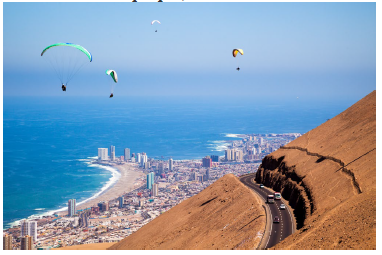Warum kommst du durch die Tür?
Rewrite the following sentences in the negative, using nicht or kein.
Warum kommst du nicht durch die Tür?
You might also like to view...
The transcontinental railroads were built and owned by private companies but financed by the public (with one exception, James J. Hill's Great Northern). The sparseness of population between the Mississippi Valley and California and Oregon (Washington State after 1889) made it impossible to attract private investors to railroads connecting the East and West. Construction was too expensive
Building a mile of track meant bedding 3,000 ties in gravel and attaching 400 rails to them by driving 12,000 spikes. Having built that mile in Utah or Nevada, a railroader had nothing to look forward to but hundreds more miles of scarcely inhabited desert mountains. With no customers along the way, there would be no profits; without profits, no investors. The federal government had political and military interests in binding the Pacific Coast to the rest of the Union, and, in its land, the The Pacific Railway Act of 1862 granted to two companies, the Union Pacific (UP) and the Central Pacific (CP), a right of way 200 feet wide between Omaha, Nebraska, and Sacramento, California. For each mile of track that the companies built, they were to receive, on either side of the tracts, 10 alternate sections (square miles) of the public domain. The result was a belt of land 40 miles wide, laid out like a checkerboard on which the UP and the CP owned half the squares. The railroads sold the land to provide the money for construction and created customers in the buyers. Or they used their vast real estate as collateral against which to borrow cash from banks. In addition, depending on the terrain, the government lent the two companies between $16,000 and $48,000 per mile of track at bargain interest rates. According to the passage, the railroads were able to obtain construction funds by a. selling railroad stocks to private investors. b. giving the construction workers a share of the profits. c. applying for government grants. d. selling land or getting low interest government loans.
Comentario de Sandy: Creo que (4) ____________________ (ser) una idea fantástica hacer parapente (paragliding) en Iquique, en el norte de Chile.
Usando el condicional, completa los comentarios de los amigos de Richa y Yasmine.
Yasmine dice en su blog de hoy:
“Necesitamos ayuda para planear los días que nos quedan aquí en Argentina después del terminar las clases. Queremos que ustedes nos ayuden a decidir”.
Posiblidad #4: Iquique, Chile

Vamos de paseo por un río ancho y profundo en los trópicos mientras vemos y escuchamos las lindas aves de (clases, grupos) e_________________ que están en peligro de extinción.
Fill in the blank(s) with the appropriate word(s).
The most appropriate strategy for learning the material in this selection would be to
Levi Coffin’s Reminiscences of the Underground Railroad in the 1850s I was personally acquainted with all the active and reliable workers on the Underground Railroad in the city, both colored and white. There were a few wise and careful managers among the colored people, but it was not safe to trust all of them with the affairs of our work. Most of them were too careless, and a few were unworthy—they 1 could be bribed by the slave hunters to betray the hiding places of the fugitives. We soon found it to be the best policy to confine our affairs to a few persons and to let the whereabouts of the slaves be known to as few as possible. When slave hunters were prowling around the city we found it necessary to use every precaution. We were soon fully initiated into the management of Underground Railroad matters in Cincinnati, and did not lack for work. Our willingness to aid the slaves was soon known, and hardly a fugitive came to the city without applying to us for assistance. 2 There seemed to be a continual increase of runaways, and such was the vigilance of the pursuers that I was obliged to devote a large share of time from my business to making arrangements for their concealment and safe conveyance of the fugitives. They sometimes came to our door frightened and panting and in a destitute condition, having fled in such haste and fear that they had no time to bring any clothing except what they had on, and that was often very scant. The expense of providing suitable clothing for 3 them when it was necessary for them to go on immediately, or of feeding them when they were obliged to be concealed for days or weeks, was very heavy…. Our house was large and well adapted for secreting fugitives. Very often slaves would lie concealed in upper chambers for weeks without the boarders or frequent visitors at the 4 house knowing anything about it. My wife had a quiet unconcerned way of going about her work as if nothing unusual was on hand, which was calculated to lull every suspicion of those who might be watching, and who would have been at once aroused by any sign of secrecy or mystery. Even the intimate friends of the family did not know when there were slaves hidden in the house…. a. focus on memorizing specific facts. b. concentrate on learning unfamiliar terms. c. summarize the story in your own words. d. apply the scientific method to the author’s claims.